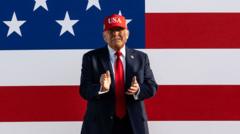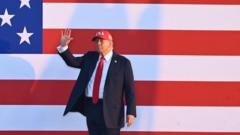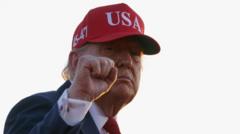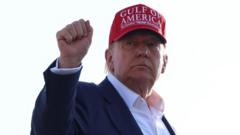President Trump’s ultimatum to Mexico regarding fentanyl trafficking has sparked a complex dialogue focused on the overwhelming challenges facing both nations. As President Claudia Sheinbaum pushes back against accusations of government complicity, the efficacy of proposed measures remains uncertain.
Challenges Loom as Mexico Seeks to Combat Fentanyl Trafficking Amid Trump Administration Pressures

Challenges Loom as Mexico Seeks to Combat Fentanyl Trafficking Amid Trump Administration Pressures
The Biden administration faces significant hurdles in curtailing the flow of fentanyl from Mexico, as new agreements are negotiated with the Mexican government in response to tariffs threatened by Trump.
In recent developments regarding the fentanyl crisis affecting the United States, President Trump has placed significant pressure on Mexico, Canada, and China to take action against the influx of the synthetic opioid. With his announcement of potential tariff impositions, he has heightened discussions around international drug trafficking and domestic demand in the U.S.
Claudia Sheinbaum, President of Mexico, responded forcefully to these claims, rejecting accusations that her administration colludes with drug traffickers. Instead, she shifted the narrative towards the United States, arguing that the root problem lies in its high demand for narcotics and the illegal arms trade that fuels cartel violence.
As part of a temporary agreement, Sheinbaum secured a pause on Trump's proposed tariffs in exchange for Mexico's commitment to dispatch 10,000 National Guard troops to the U.S.-Mexico border to assist in stemming the flow of fentanyl. However, experts caution that the complexities involved in effectively combating drug cartels pose significant barriers.
Several factors complicate the efforts to combat fentanyl trafficking. Analysts highlight the cartels' formidable resources and the ease with which fentanyl can be synthesized and smuggled. The chemicals involved often originate from China, making them difficult to regulate, while the highly portable nature of the drug allows for its rapid movement across borders.
Furthermore, with such a short timeline for demonstrating progress, the U.S. and Mexico face substantial doubts about their ability to effectively mitigate the issues posed by the rampant drug trade, leaving both nations to grapple with strategies that may not yield immediate results.




















